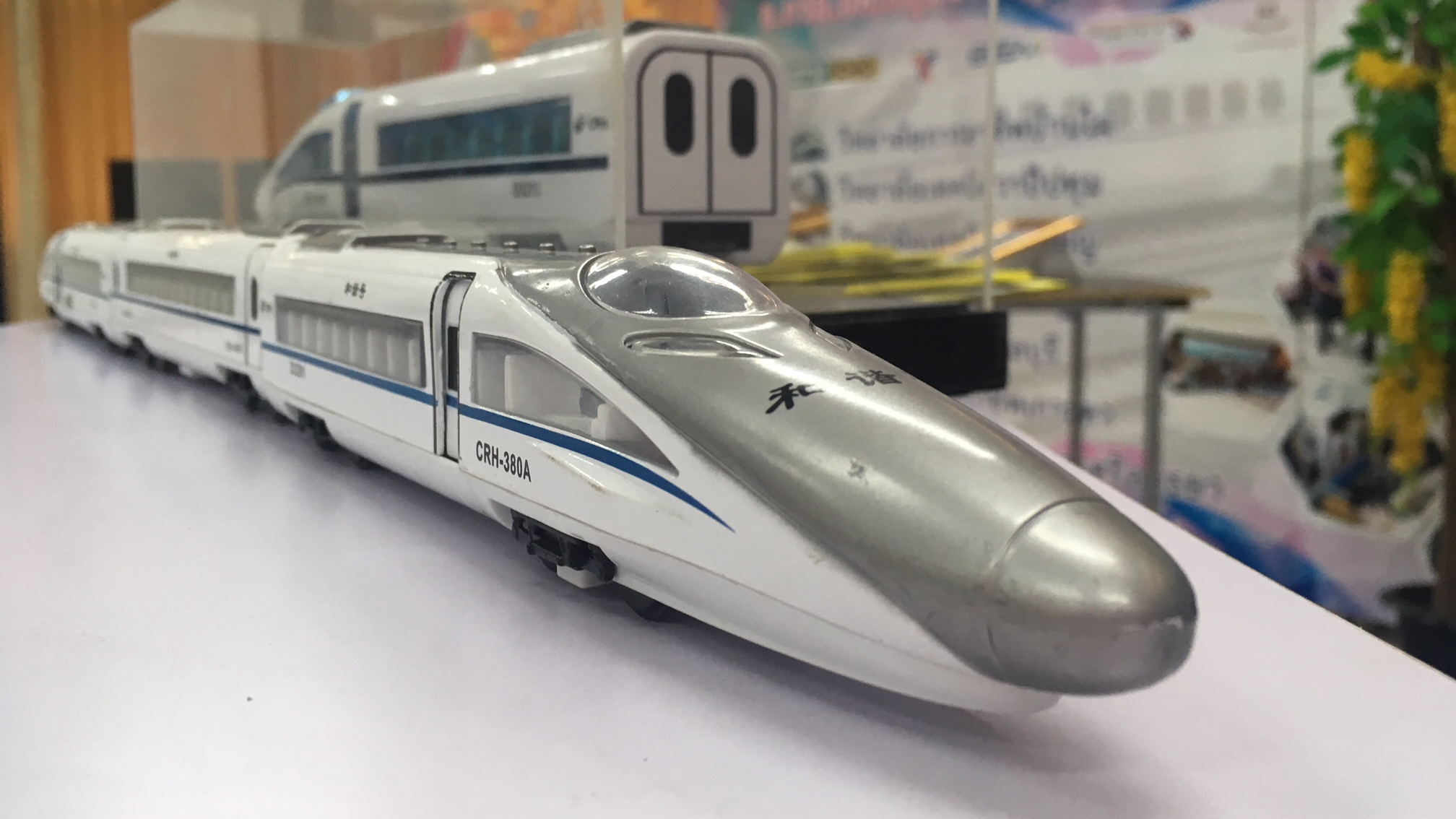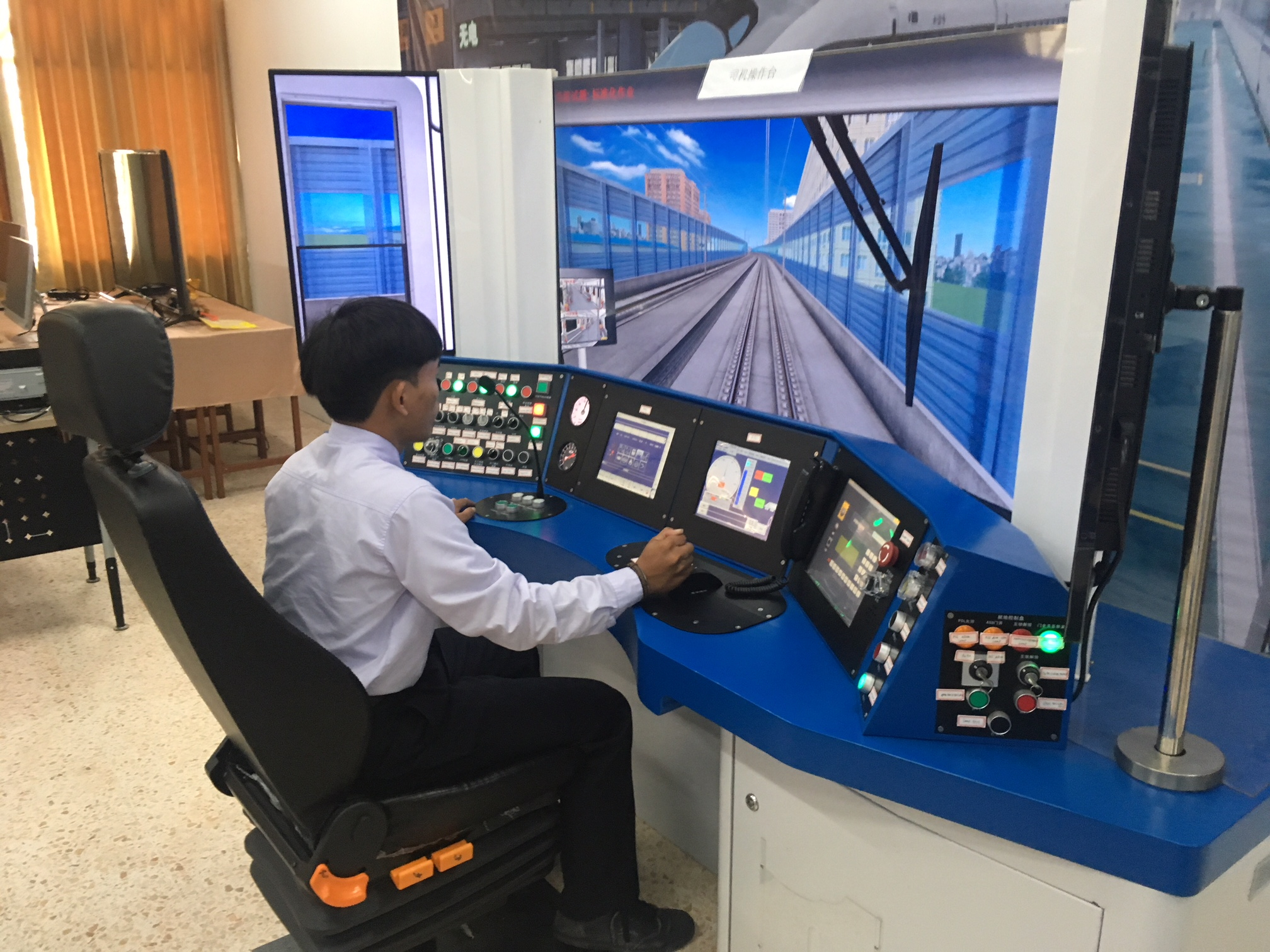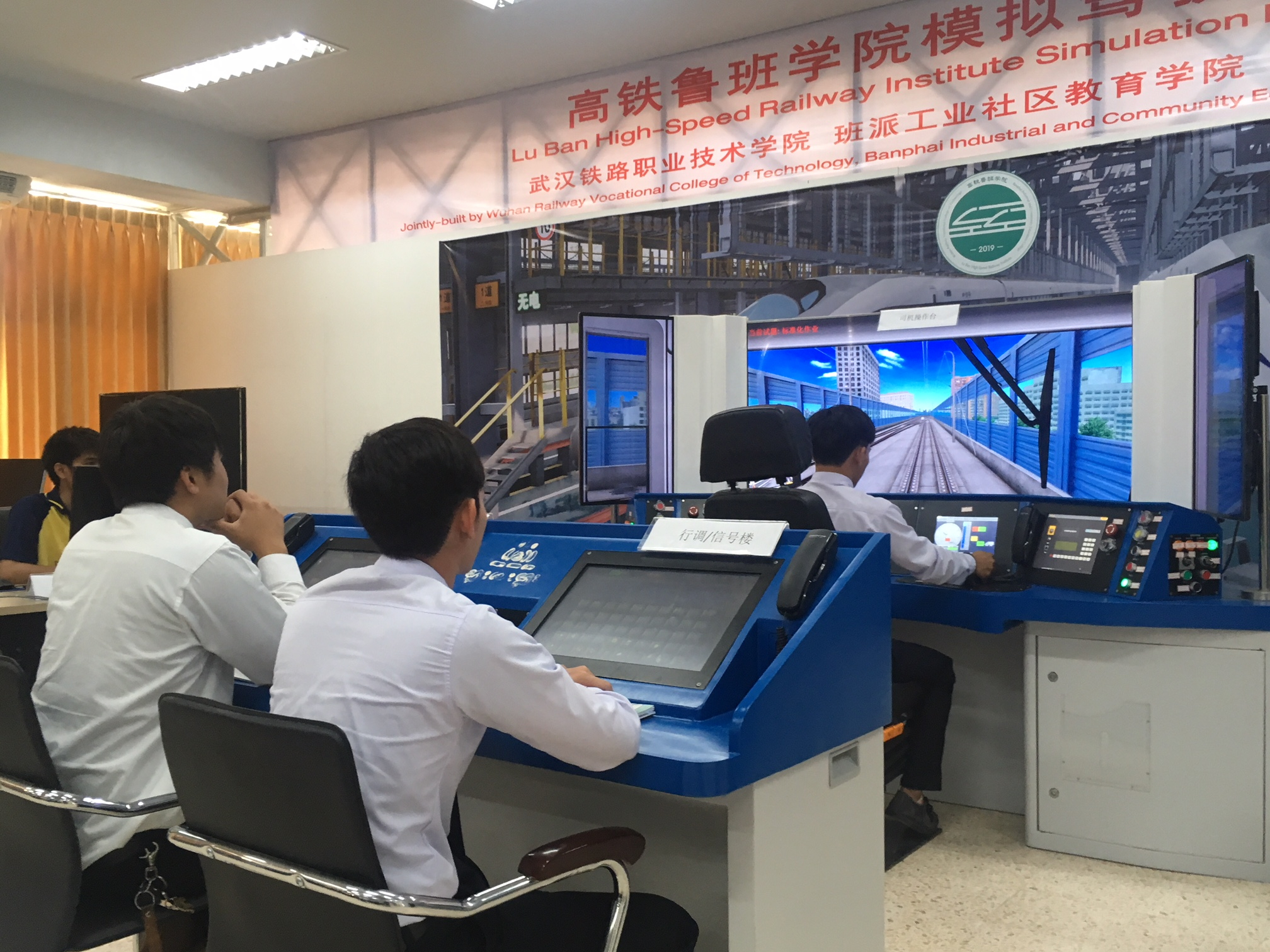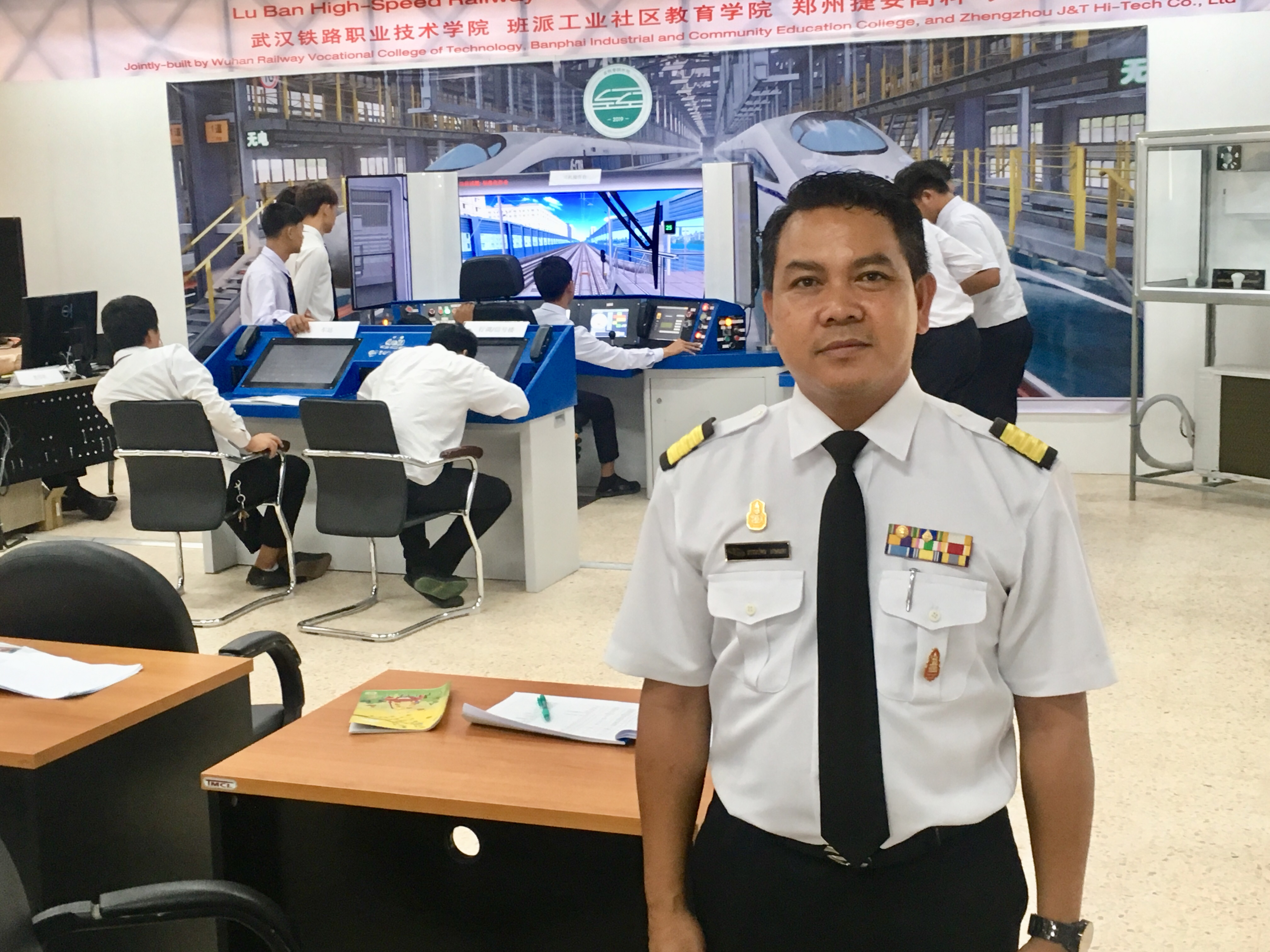

The simulator was a gift from China, Thailand’s high-speed rail partner. /CGTN Photo
Sitting at the controls of a state-of-the-art simulator, student train driver Atithan Nambuddee accelerates out of a station.
His "virtual train" gathers pace as he prepares for unknown hazards ahead – from the shock of speeds of up to 250 kilometers per hour to dangers such as obstacles on the track.
Atithan is operating Thailand’s first train driver simulator, the centerpiece of the Lu Ban High-Speed Railway Institute.
The institute is teaching drivers and engineers how to operate Thailand’s new 12-billion-U.S.-dollar high-speed network, under construction in a joint project with China.

The simulator was a gift from China, Thailand’s high-speed rail partner. /CGTN Photo
"I hope to be one of Thailand’s first high-speed train drivers," said Atithan.
"It will be so much faster than normal trains – and much more convenient than flying."
The railway is a key project for Thailand in China’s Belt and Road super-scheme to open new connections between Asia, Africa and Europe.
Thailand’s existing rail network is aging and in desperate need of modernization. The average speed of trains is just 40kph – the new high-speed trains will travel up to six times faster.

The simulator recreates a number of hazards drivers can face. /CGTN Photo
Flight simulators for pilots have been in use for decades, but now the technology has been adapted to teach students how to drive high-speed trains.
"The simulator helps me experience how to drive a train," said Atithan. "It is so real, some hazards are easy but some are really hard."
The Lu Ban institute has been established in Thailand’s northeastern province of Khon Kaen, in a collaborative effort between Banphai Industrial College in Thailand and the Wuhan Railway College in China. The simulator was a gift from Wuhan’s partner, Zhengzhou J&T Hi-Tech Co. Ltd.
Director of the institute, Thampapon Ketnok, said: "Students learn how to drive and solve problems – starting the train, stopping, doors not closing, obstacles on the track, birds and tree branches hitting the cab, even someone running in front of the locomotive.
"Of course, they still need to drive a real train but this is a good start; first they will study on the simulator here in Thailand and later they will travel to China to experience an actual train."

Director of the Lu Ban High-Speed Railway Institute Thampapon Ketnok /CGTN Photo
Student Asawin Chainilpan took a turn at the simulator’s controls.
He said: "It is fun, I like it. I can learn on a virtual train, how to drive, how to stop at a station."
But Asawin’s ambition is to join the new railway not as a driver but as an engineer.
"My interest is the technical aspect, how to make the engine work, maintain the tracks and the wheels," he said.
Future drivers – and future engineers – will study for a year in Thailand and then one or two years in China.
They are due to qualify in three years’ time – to coincide with the planned opening of the first phase of Thailand’s high-speed network, a 250-kilometer route northeast from the capital Bangkok.
Phase two will see the line continue to Thailand's border with Laos. Many hope that the line will eventually span both north and south to China and Singapore, creating a Trans-Asian rail network.

Copyright © 2018 CGTN. Beijing ICP prepared NO.16065310-3
Copyright © 2018 CGTN. Beijing ICP prepared NO.16065310-3